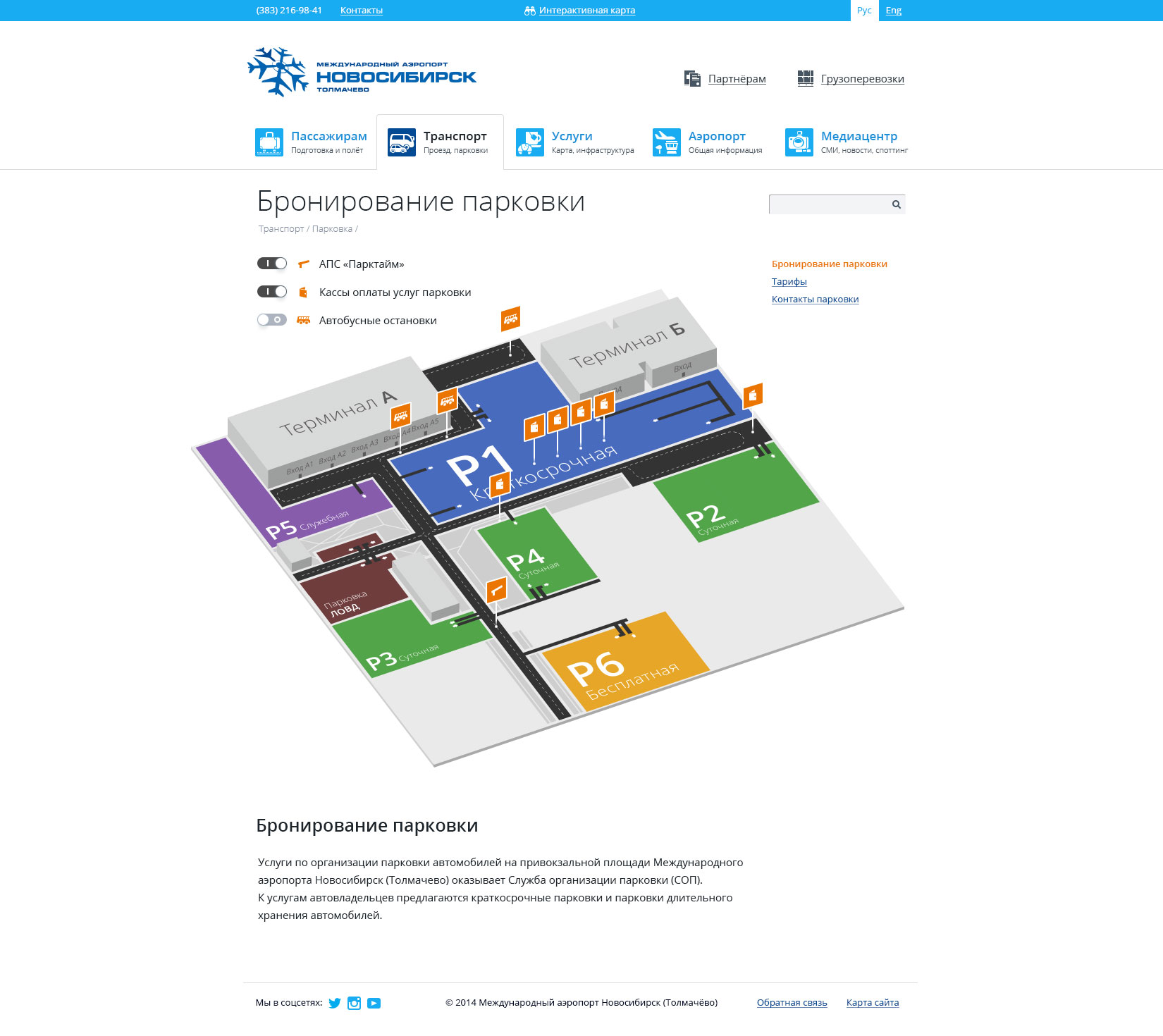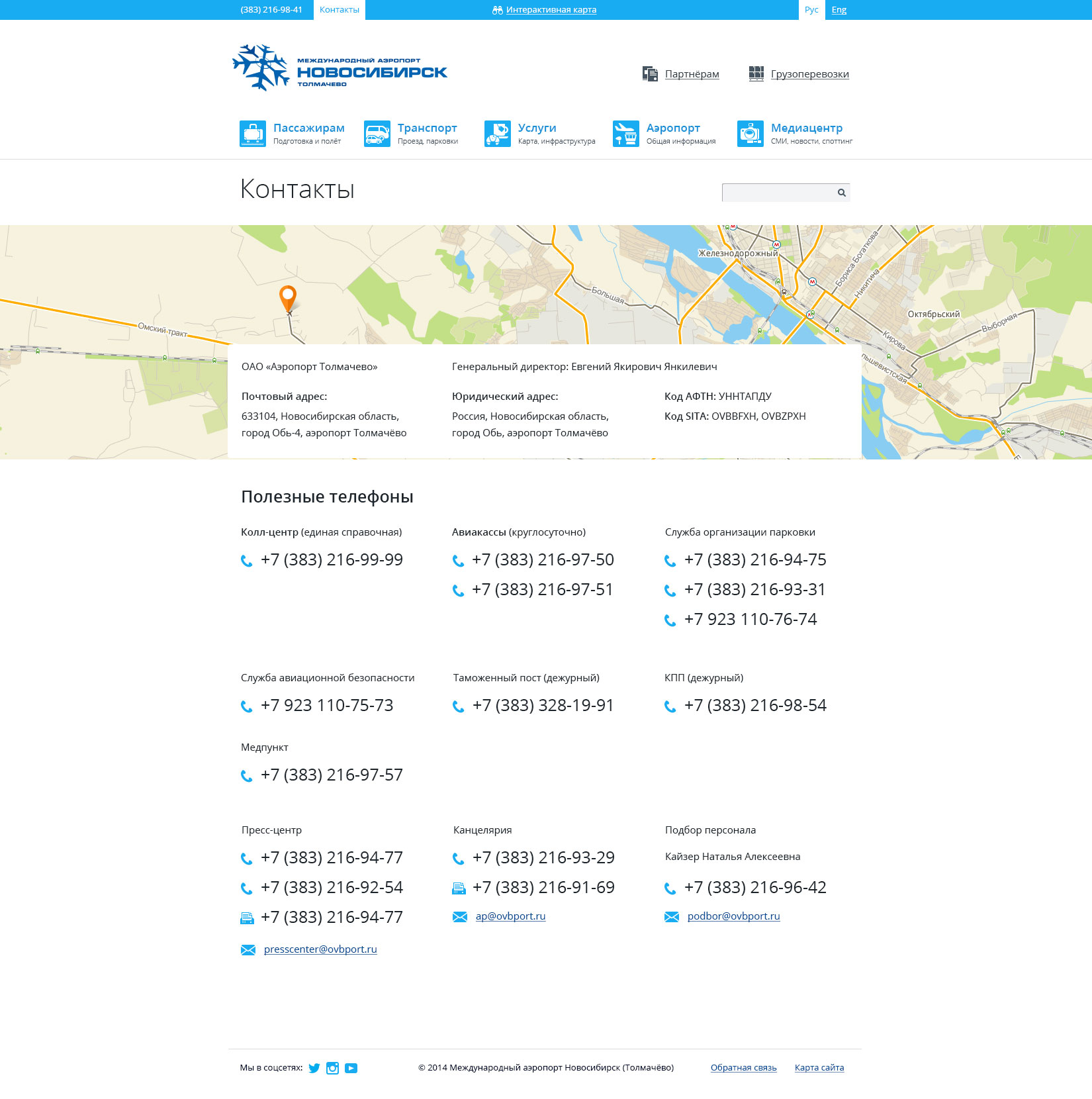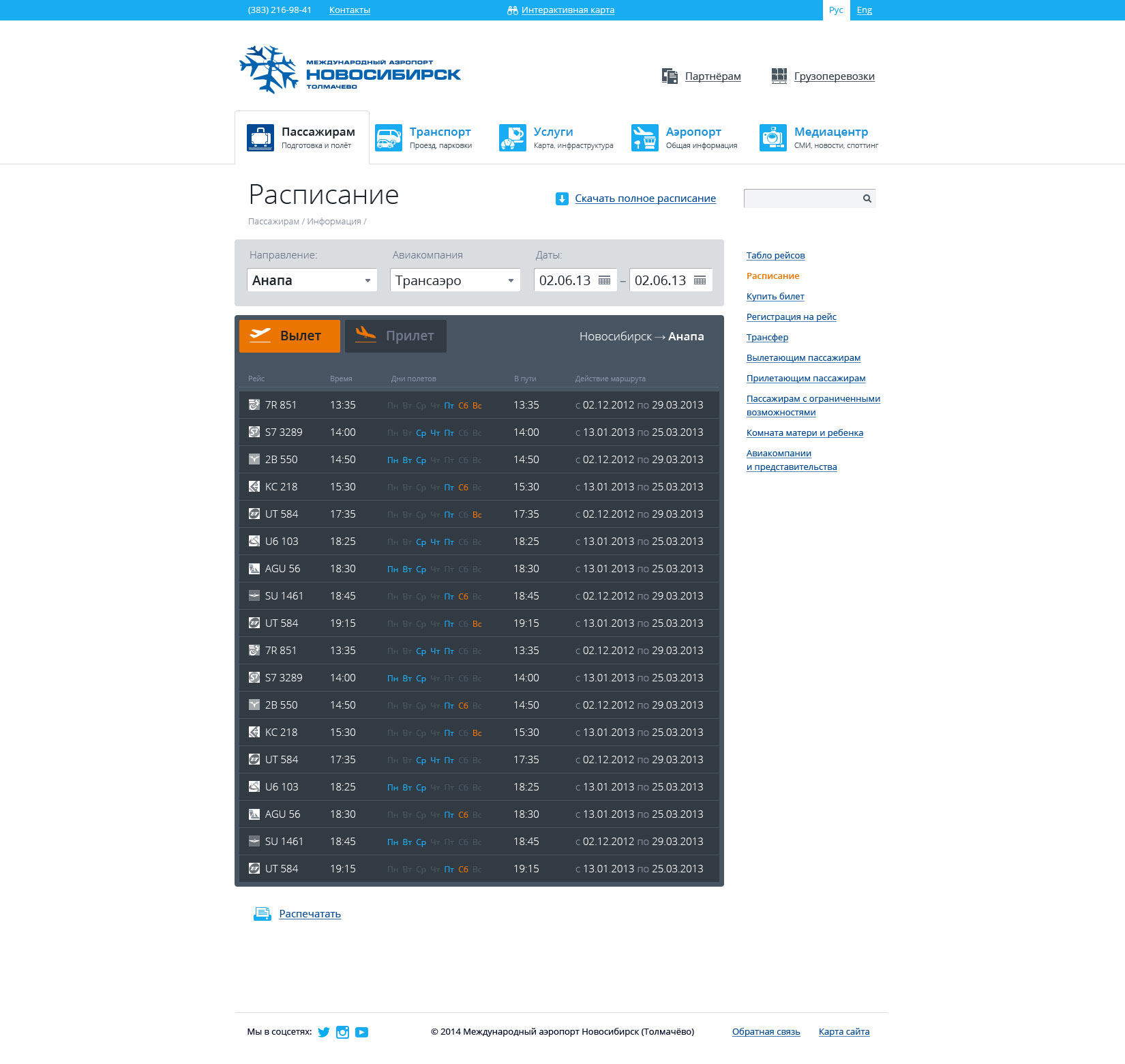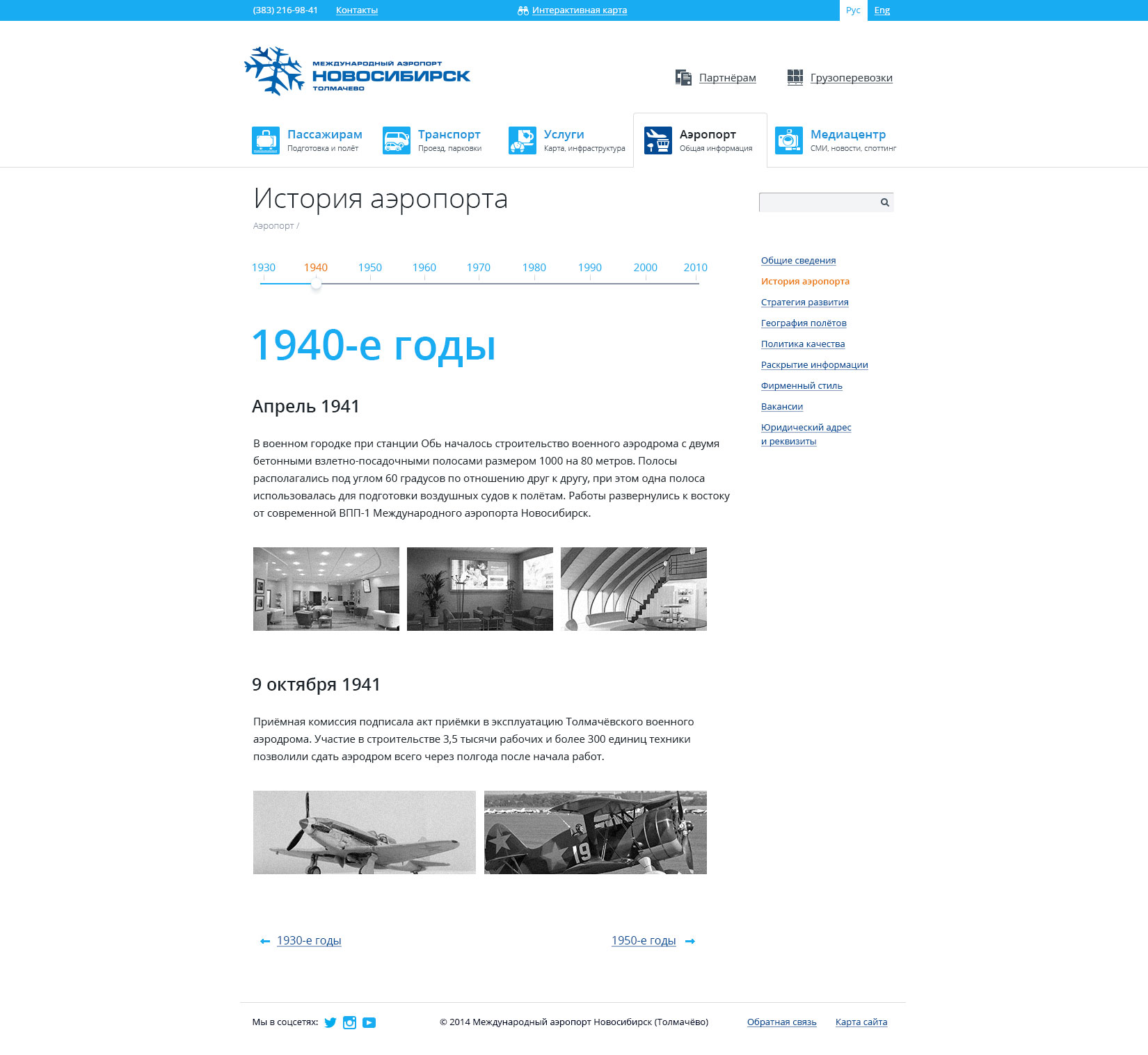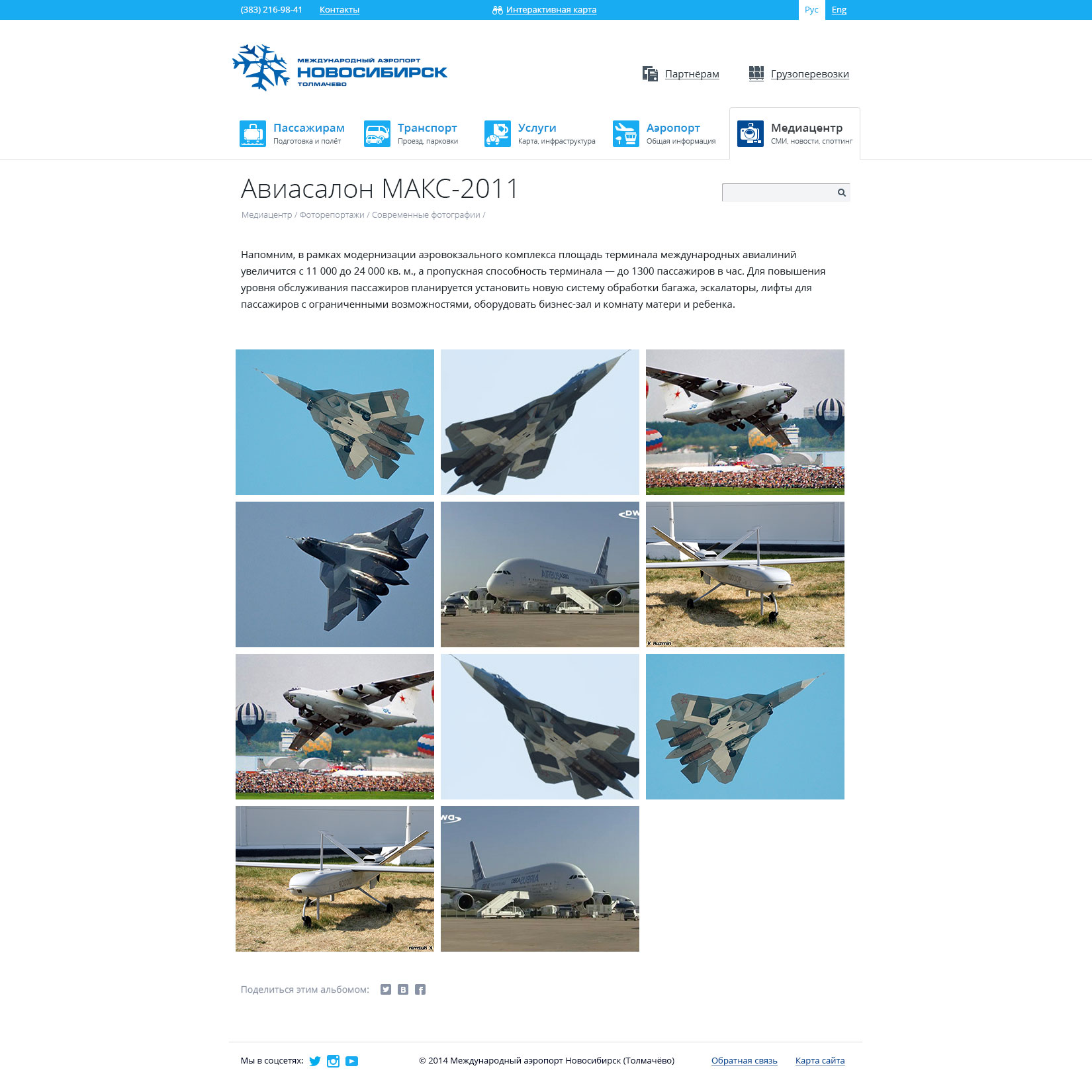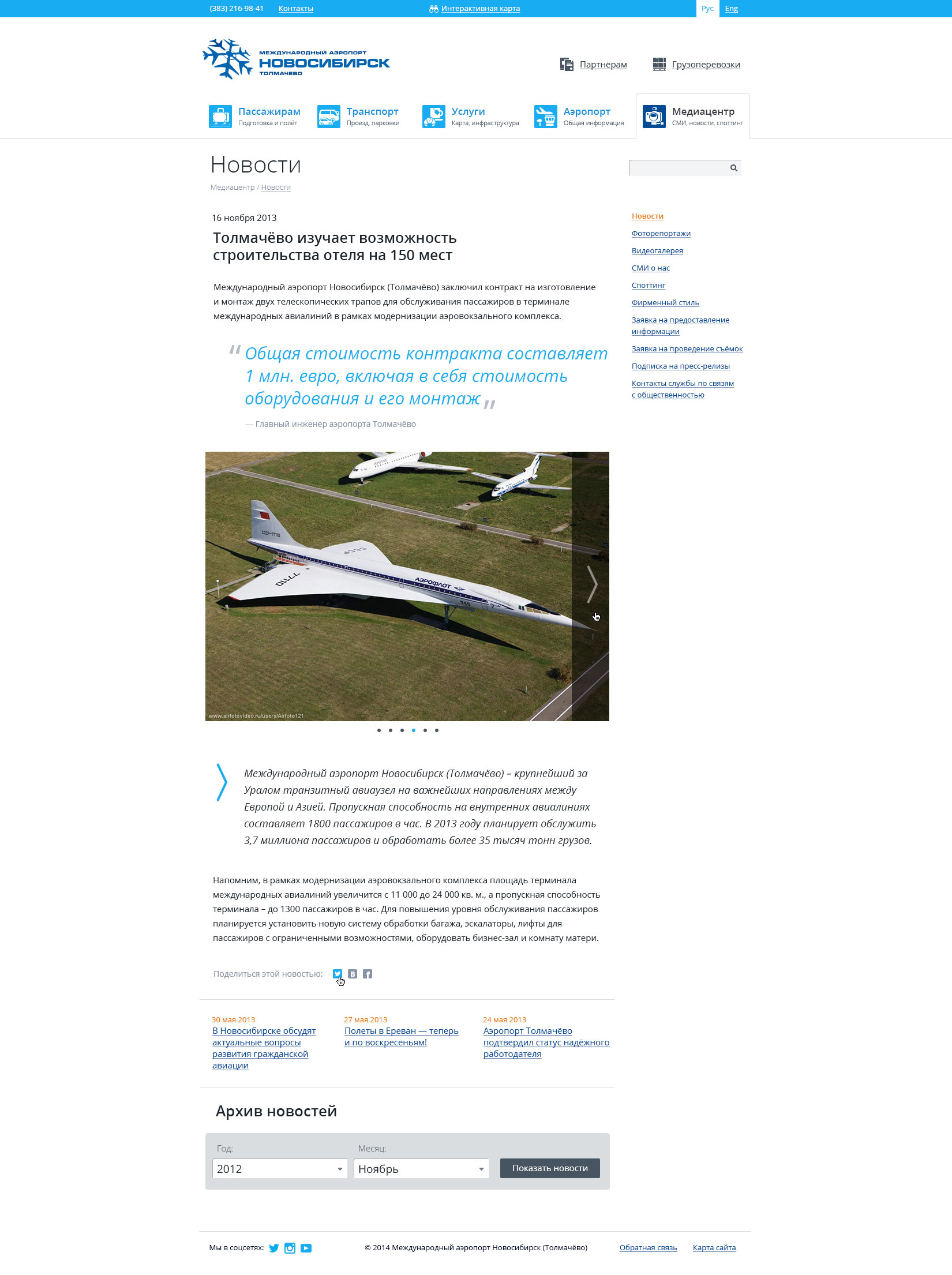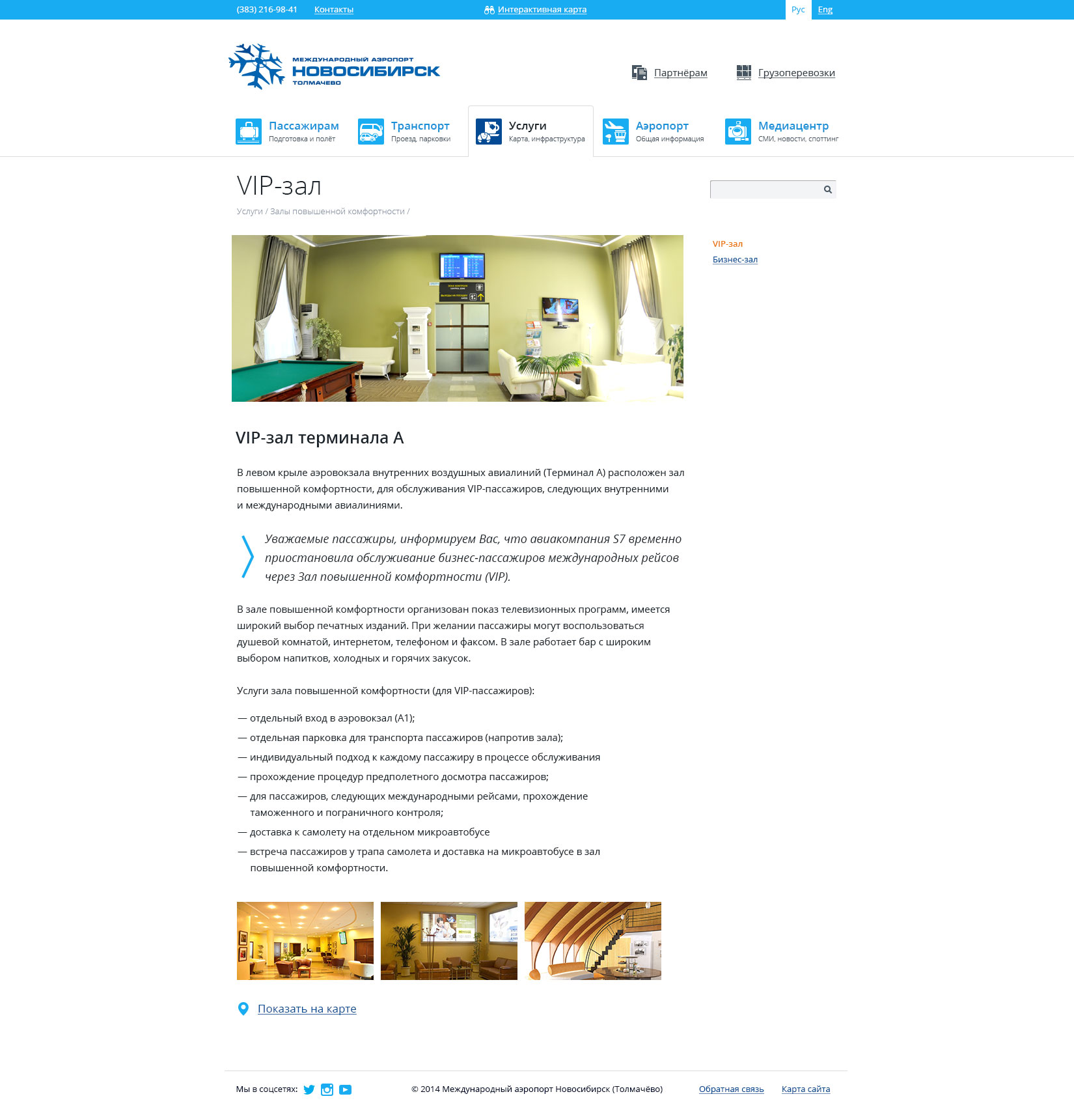Visit all airport websites
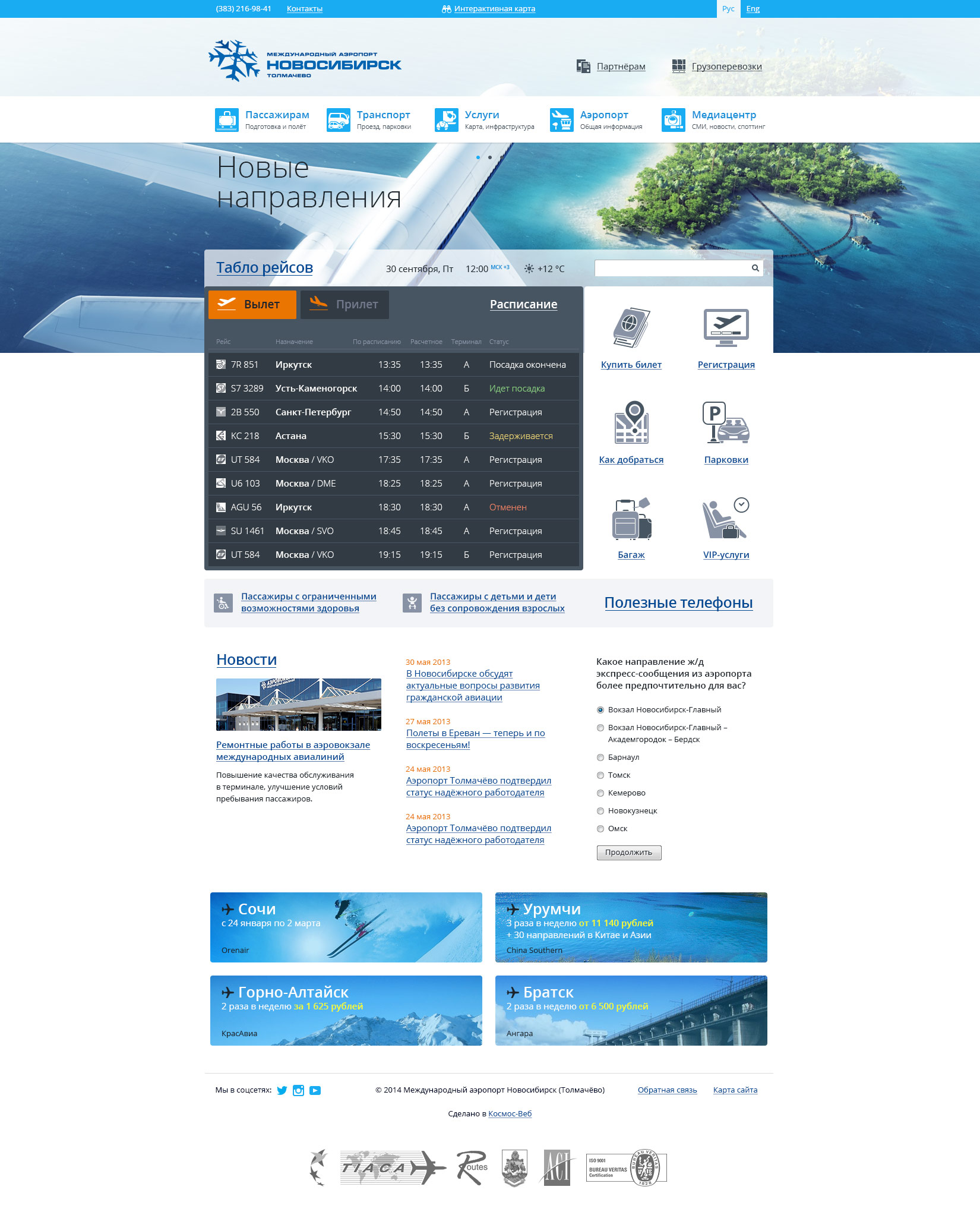
The website was designed following a mobile-first approach, as the most common use case for any airport website is checking the online flight information board via a smartphone.

We faced some challenges: the client’s working group consisted of representatives from six departments, each insisting that their information should appear on the first screen of the website.
At that time, most people still had button phones, so we had to explain responsive design in the simplest terms. As a result, it was difficult to get constructive feedback or reach a design agreement.
We didn’t panic and created paper prototypes of the website — printed color layouts that could be ’scrolled’ inside paper mock devices. This approach sparked great interest among the working group, and the design was approved on the first try.
Together with the client, we developed a strategy for adapting the website to other airports managed by Novaport. Gradually, by scaling the tolmachevo.ru project, we launched websites for 17 additional regional airports and for Novaport’s corporate site itself.
The airports use one of two flight board management systems: ’Aeroinform’ or ’Cobra’. We studied the specifics of each and configured integration with the websites via XML file exchange.
In addition to integrating the online flight board and schedule, we connected various external interactive services to the websites — both via APIs and simple HTML widgets.
- Ticket booking: Nemo Travel, Agent.ru, Aviba, AnyTicket.
- Transfer booking: I’way.
- Floor plans: 2GIS.

These extended directories are used in the flight board and schedule systems. They contain additional information about airlines: links to online check-in, customer service phone numbers, logos in various resolutions, translations into English and Chinese, airport coordinates, and more.
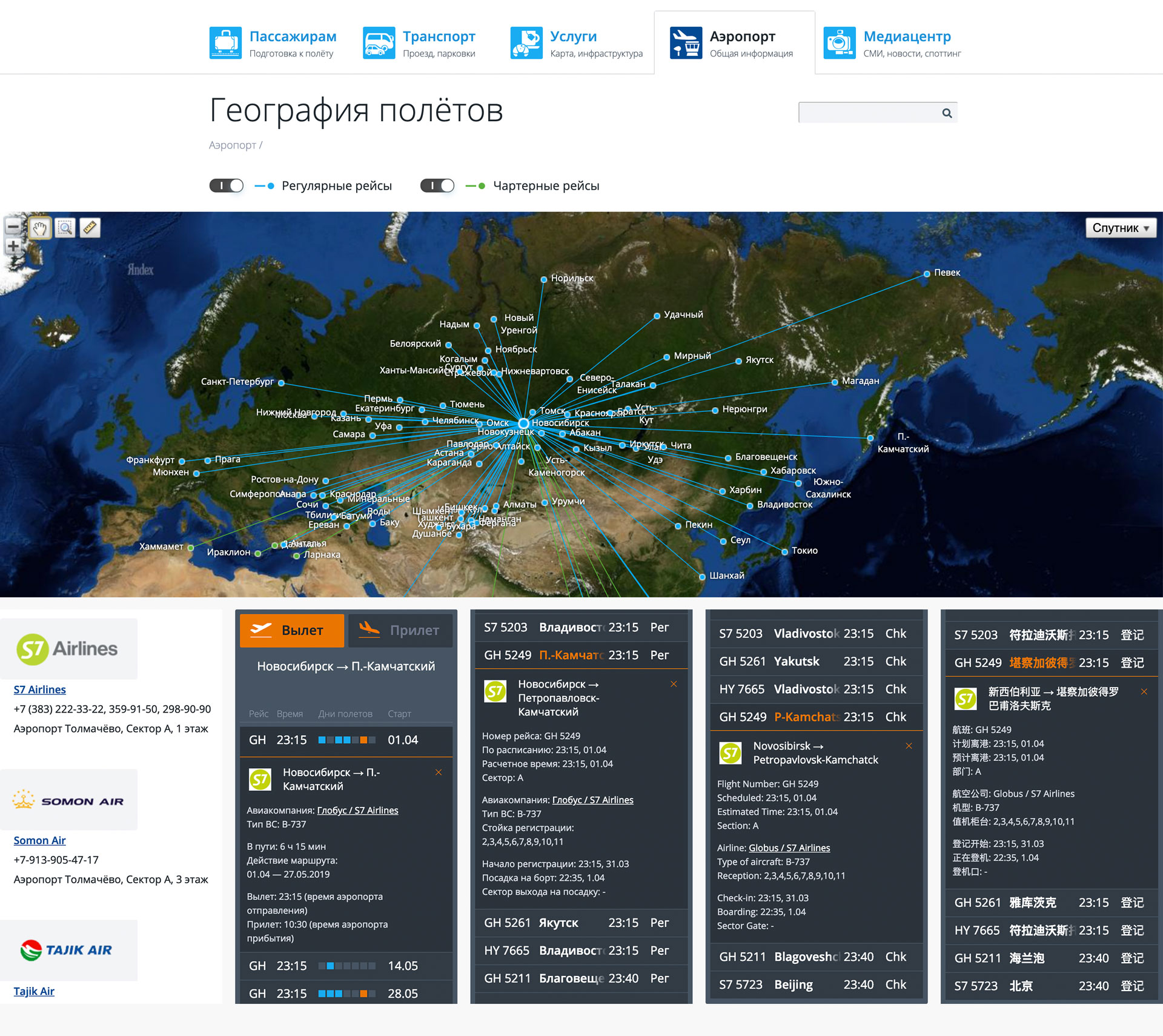
For each airport, we illustrated and brought to life an interactive infrastructure map. For some airports, we also developed a parking reservation system.
For most websites, we built fully functional English versions, and for Novosibirsk — even a Chinese version. Additionally, we implemented an accessibility version for visually impaired users.
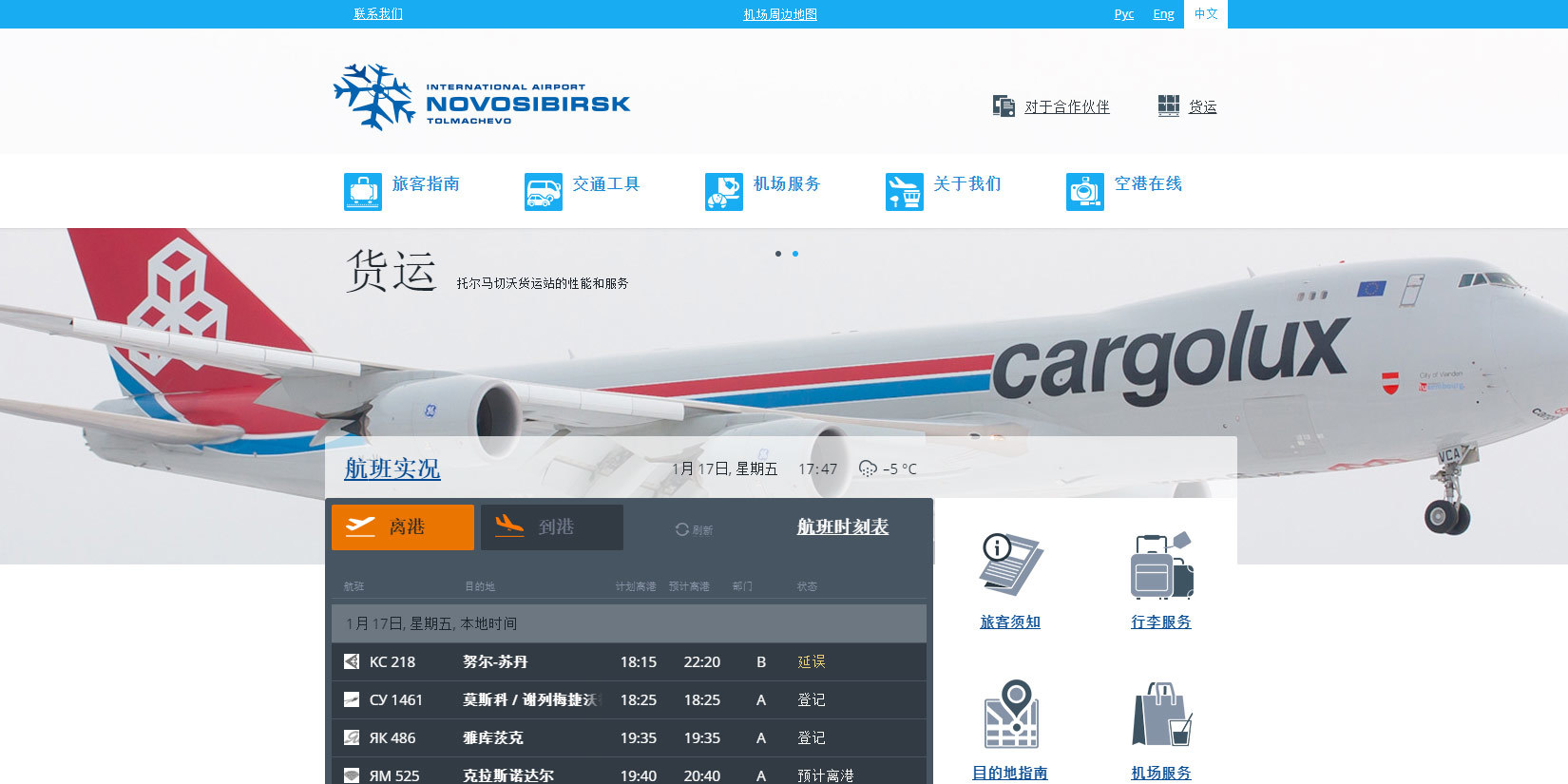
We held several meetings to discuss different collaboration formats and helped select a task-tracking system (initially Meistertask, now transitioning to Trello). The managing company assigned a dedicated manager, who collects tasks from all airports, prioritizes them, refines the requirements, and sends us well-structured, ready-to-execute requests.
Initially, the first website (Tolmachevo) was launched on a dedicated server. But by 2014, we had migrated all websites to the cloud. We implemented 24/7 uptime monitoring for each website — responding instantly if any issues arise. We continuously track current technologies and update modules to ensure maximum performance and security.
All websites share a common software core, which simplifies support and maintenance. Any updates made to the core are automatically applied across all airport websites.
Over time, we established an optimal workflow for replicating solutions for new airports. The development and launch of a new website takes no more than two months, including documentation, requirements approval, content collection, and deployment.
Visit the websites:
Novosibirsk
https://tolmachevo.ru/Astrakhan
https://airportastrakhan.ru/Chelyabinsk
https://cekport.ru/Murmansk
https://airport-murmansk.ru/Tyumen
https://tjmport.ru/Chita
https://aerochita.ru/Kaliningrad
https://kgdavia.ru/Mineralnye Vody
https://mvairport.ru/Volgograd
https://airportvolgograd.ru/Tomsk
https://tomskairport.ru/Kemerovo
https://airkem.ru/Vladikavkaz
https://vladikavkazaero.ru/Belgorod
https://belgorodavia.ru/Voronezh
https://vozavia.ru/Stavropol
https://stavavia.ru/Nalchik
https://nalchik-airport.ru/Pskov
https://pskovavia.ru/Ulan-Ude
https://www.airportbaikal.ru/Novaport Management Company
https://novaport.ru/











